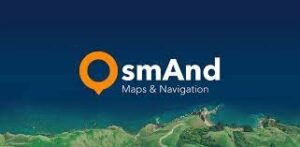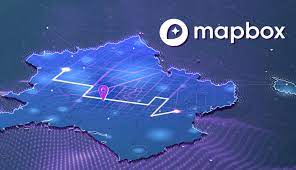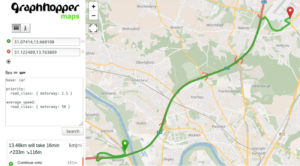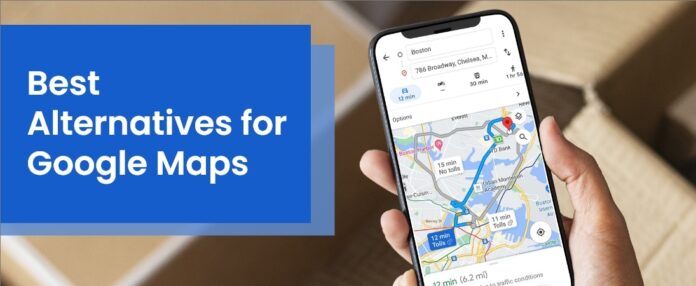Best Map API Alternatives To Google Maps For Website will be discussed in this article. Geolocation services are essential for ecommerce and other business spheres. That’s why Google was so popular among website owners. However, since it has hiked the rates, most of us are seeking for another mapping services. In the article we’ll tell you about popular alternative API solutions and their main features.
Why Look for Google Maps alternatives
Maps API – ready-made interface solution to interact with location-based services, which help us to add location data, maps, routing and other geo data to the websites or app.
Google Maps API is the most popular service. However, in 2018 it has decreased limits by 30 times, raised prices and add strict API key requirement with enabled credit card biling.
Previous 25,000 free displays per day have become 28,000 ones per month with charge of $7 extra for each subsequent 1,000.
Because of that change, you may have some reasons to search for alternative services. Fortunately, those higher prices have become a trigger point for open-source mapping services. Thanks to that, now you have more geocoding API solutions to choose from.
TOP 5 alternatives vs. Google Maps
Elfsight Team researched the main features of open-source and popular software alternatives to Google Map for your website. Check the top list of location-based services below.
Alternative #1: OsmAnd

This service is completely based on an open-data platform, inspired by Wikipedia. OpenStreetMap is an editable map, all data of which is collected by community of mappers and ground surveys. The map & navigation app can work on website, has 5 highly detailed maps with routes, voice guidance, place and traffic information.
Price: Free; $1,99 (month); $3,99 (3 months); $7,99 (year)
API tools: location, trip recording, distance measurement, POIs info (provided by Wikipedia), different overlays like touring/navigation GPX tracks.
Features: #opendata, #navigation, #tile, #vector, #overlays, #daily updates, #voice-guidance, #SDK
Alternative #2: Mapbox

One of the main alternatives to Google Map, as it primarily developed as customizable maps for websites and apps. The majority of data is provided and maintained by open-source mappers communities, like OpenStreetMap, USGS, Landsat and others. The main advantage of the service is an opportunity to seamlessly integrate maps and other tools, like Directions, Geocoding, Static Images and even augmented reality (AR) navigation.
Price: Free (50,000 requests) – $5/month (100,000 requests)
API tools: live updating maps, navigation with augmented reality (AR) mode and guidance, tools for automated driving experience.
Features: #opendata, #vector, #tile, #SDK, #place-based AR, #live-update, #satellite
Alternative #3: JawgMaps

If you need an alternative to Maps API for your website, which obviously must be adjustable and mobile-friendly tool, you need to try JawgMaps. The tools are simple to customize and you can choose any SDK, that fits your need. Using all mapping tools, geolocation, routing and elevation data, you can also check real-time stats and analyze your maps usage.
Price: Free (50,000 requests) – €500/month (1,000,000)
API tools: geolocation search, real time statistics for all services, routing, navigation guidance, near location and POI definition, elevation data.
Features: #opendata #pixel #tile #vector #SDK #routing, #navigation #guidance #elevation #mobile-friendly #real-time metrics.
Alternative #4: HERE

The great variety of mapping tools and geo solutions, developed by HERE can make anyone impressed. There you can find products to help you with a fleet performance, advertising your company, presenting routing, real-time traffic insight and other solutions for business.
Price: Free (250,000 requests) – Pro $449/month (1,000,000 requests).
API tools: navigation with augmented reality (AR), fleet telematics, high-precision maps, location advertising, tracking, routing
Features: #tile, #vector, #AR, #SDK, #POI database, #logistics, #mobile-friendly, #user-tailored
Alternative #5: GraphHopper

Open-data routing library, based on OpenStreetMap. GraphHopper can help to optimize routes and navigation for logistic services, use API for commercial cases and improve POI search. Also, here are some original handy tools, like Map Matching or Matrix Calculations apps.
Price: Free (15,000 requests) – €304/month (1,500,000 requests).
API: route-planning, navigation with time distance and guidance, fleet and logistics tracking, location-based and POI search.
Features: #open-source #directions #routes #POI #SDK
Main Features of Google Maps API competitors
To summarize and provide you with the main pros and cons of the alternatives to Google Maps, we prepared a brief info in the following table. Feel free to study features and choose the best variant for you website or app.
Haven’t found your favourite services among the listed ones, write us via email, and we’ll be happy to add it to our article!
Listing variants are not the only solution you can used for your business or logistics need. And there are plenty of other alternatives to Google Maps API, even cheaper than presented option, but with some coding skills required. Try the following free open-data tools: Leaflet, OpenTools, Mapfit, LocationIQ, rasters.io, Sygic Maps and others.
Also, read our article on how to add Google Reviews to your website.
Conclusion: Pros and Cons of Alternative Maps Services
Spatial data sources (like OpenStreetMaps) are handy and free to use. Has it become pointless to use Google Maps API or there are some minuses of open-data mapping?
Firstly, don’t forget, open data is developed by volunteering mappers, who’d like to contribute and upgrade services. It leads to few contrary things: some location has richer accurate data than even Google Maps (pedestrian lanes or parking places), but in the same time, some distant and isolated places are rather unexplored and poorly presented.
Secondly, huge amount of data is not authoritative and not up-to-date. Sometimes, it’s checked up on the national level and has daily updating or traffic insight. However, the quality of most of them depends on the enthusiasm level of volunteering developers.
Then, the customization options and analytics quality are not the strong points of such services, as well as advertising campaigns and POI search. Plenty of Google Maps competitors have solutions for these challenges, but the subscription plans for them aren’t cheaper than official Google rates.
In conclusion, for owners of small or medium business, more likely, that, 28,000 free visits and $200 montly credit, offered by Google Maps, will be rather enough to achieve business goals, using the high-quality and up-to-date info.
In case you have much more amount of calls and you’re really concerned about your spendings, you can study open-source alternatives and try to embed them on your website. But, remember the quality and reliability hardly won’t meet high Googlу standarts, So, as recommendation, always provide users with trustworthy data, which mostly only the biggest global service may provide.

